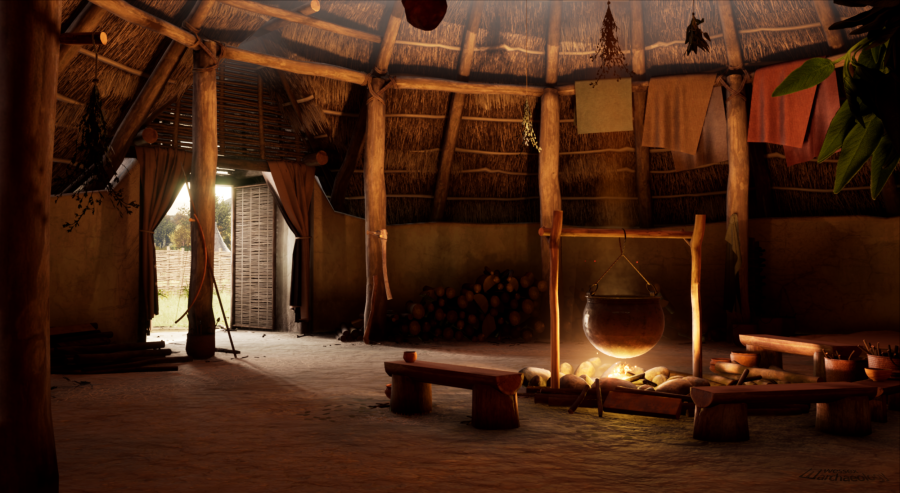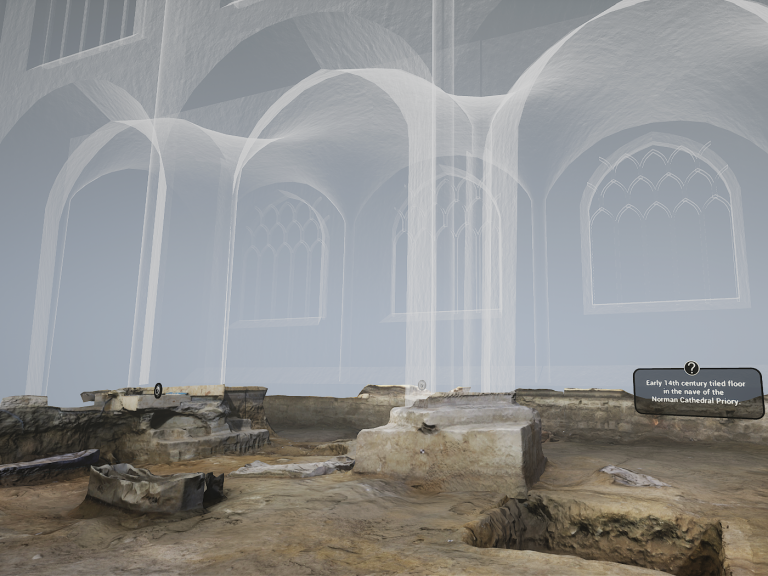Our in-house 3D Environment Artist has created an engaging and informative 3D reconstruction of the Bronze Age Roundhouse excavated at Bitham Park, Westbury.
Wessex Archaeology was commissioned by RPS Consulting Services Ltd on behalf of Barratt David Wilson Homes to undertake a large-scale excavation as part of a planning condition for a housing development at Bitham Park, Westbury, Wiltshire. The excavation revealed evidence from the Bronze Age including a field system, ring ditch and a unique ‘palisaded’ enclosure around a central roundhouse.
The bespoke 3D reconstruction can be displayed through both Augmented Reality and Virtual Reality, giving a real feel of what life may have been like in the Bronze Age. Using real-life archaeological evidence and in close consultation with our experts, our artists have sensitively visualised what the house would have looked like within its original landscape.
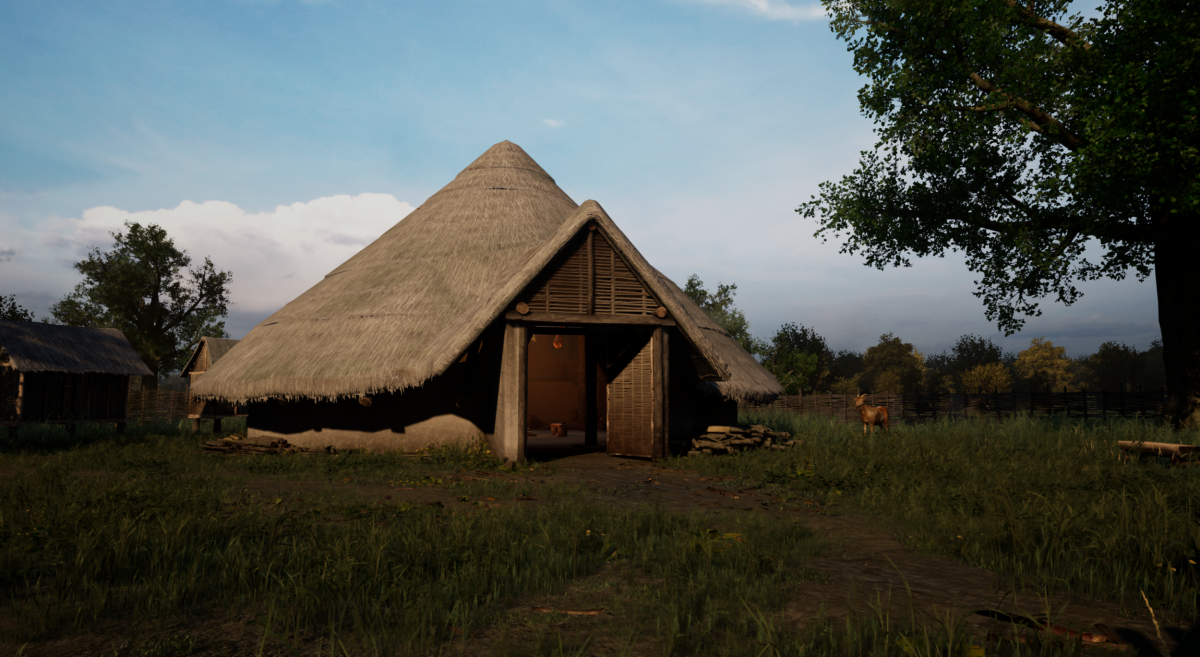
Bitham Park
The Bronze Age Roundhouse VR experience centres on the northern settlement area uncovered during excavations, which was dated to the Late Bronze Age. This roundhouse was one of at least two associated roundhouses within a small settlement outside the palisaded area. It would also have been surrounded by several small square and rectangular four and six post-built structures which are reflected in the VR environment. A range of prehistoric pottery was recovered during the excavation, from Beaker to Late Bronze Age. This assemblage is likely to represent domestic activity and has been reflected in the Beaker ware inside the VR roundhouse.
The Reconstruction Process
The techniques used to create the 3D reconstruction are similar to those used to make computer games. The 3D model is made from polygons (modifiable geometry components) which are used to represent surfaces. Texture maps (2D images) are projected onto the polygons to colour and enhance the model. The digital models are then assembled in a game’s engine which calculates the lighting and shadows.


Above: Wireframe, showing the polygons the model is made up of and textures are applied within the game engine
Above: Warp weighted loom prop based on input from experimental archaeologists at Butser Ancient Farm
Our in-house Studio experts have the added benefit of support from a full range of heritage specialists, who are able to offer insights and advice on the historical aspects. This helps us ensure our heritage interpretations are as accurate as possible.
Experience the Bronze Age lifestyle
The 3D reconstruction can also be used for creating animated fly throughs, which help show historic activities as well as how objects were used, giving a real feel for what life was like at that time.
The 3D reconstruction and fly through invites people to explore the Bronze Age roundhouse and its surrounding landscape. As you enter the Roundhouse you will discover a large cooking pot boiling over a fire, a warp weighted loom, a Palstave Axe, beds, benches, bowls, and pots. The specialists at Wessex Archaeology suggested at this time that barley was used more than wheat, and could have been stewed with meat in a large pot. Must Farm has evidence of an oat-based porridge being eaten. Outside you will find sheep and goats grazing on the land, supported by evidence from the animal bone discovered on site.
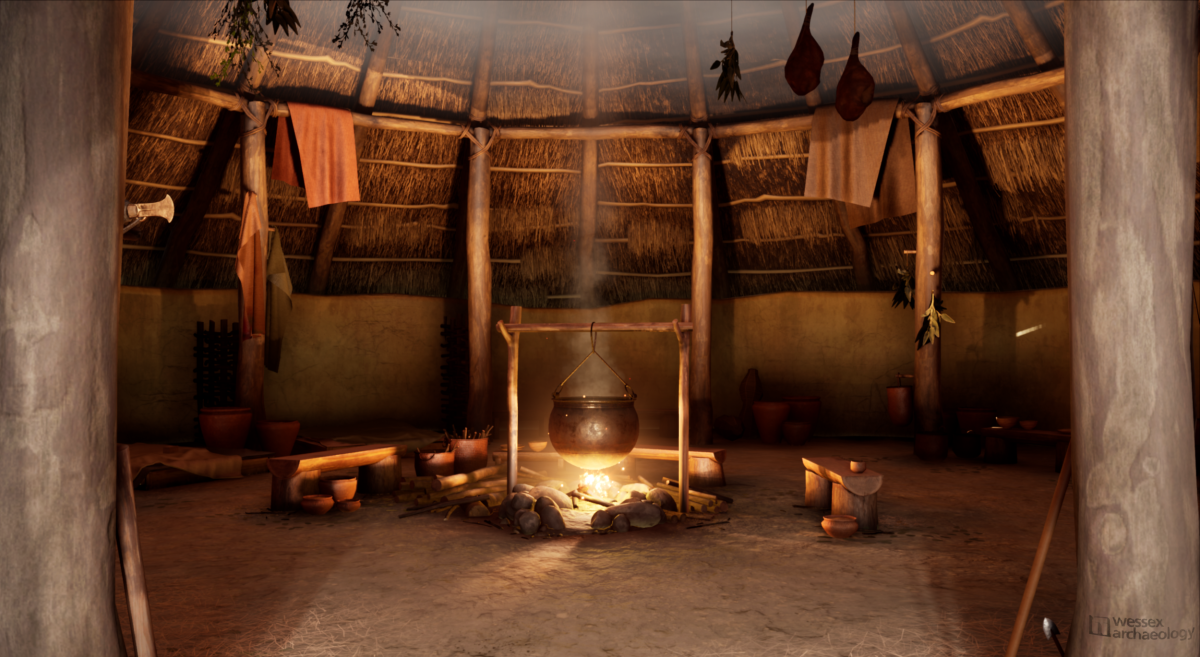
The remains from this area suggests that there was a small community – such as an extended family group – occupying this settlement, and that they did so over a long period of time and to a greater intensity than at the neighbouring palisaded site.
Educating and Engaging Communities
This reconstruction will be used for engaging local communities at events and for educational purposes at schools. 3D reconstructions and virtual reality experiences make a highly accessible heritage resource, increasing community involvement and providing a legacy to inform and inspire the next generation. As an educational charity, we believe that heritage interpretation can not only help people understand the past but can enrich their lives through emotional connections and experiences.
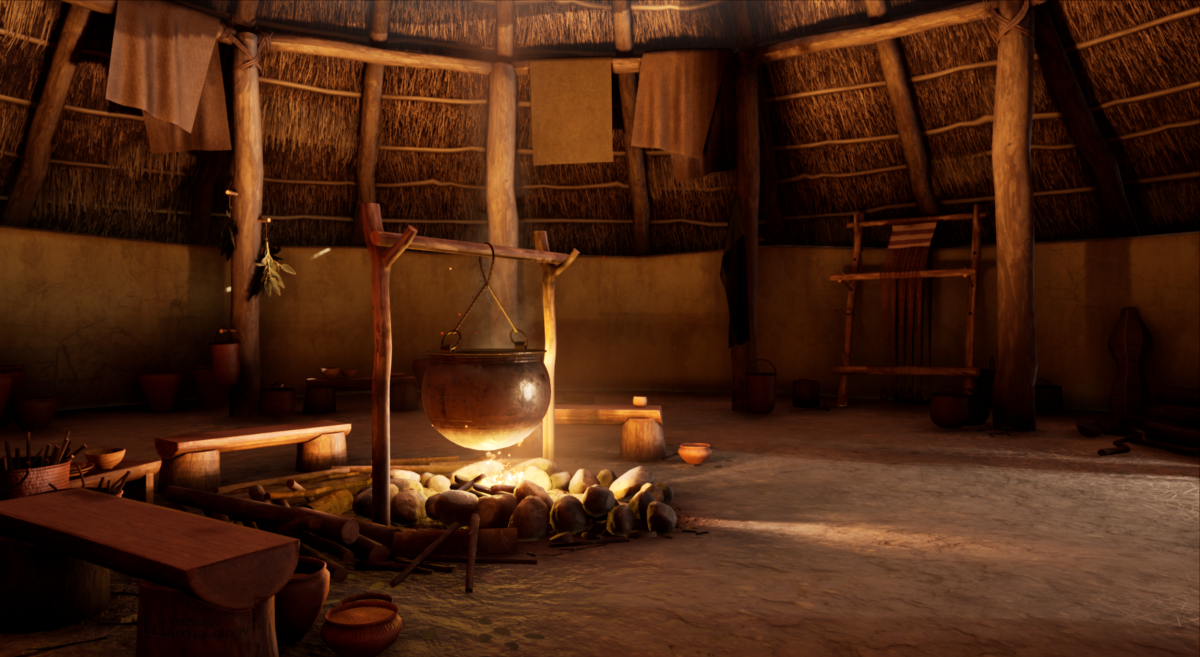
Wessex Archaeology’s educational work demonstrates that the key to effective use of VR as a learning tool lies in group participation and the opportunities for inquisitiveness this creates. This participatory approach to VR elevates learning outcomes by enabling children to ask questions about what they are seeing in VR experiences. Wessex Archaeology’s authentic VR experiences draw upon our specialist’s extensive knowledge. Our VR environments are highly detailed accurate representations of real places discovered in the archaeological record. VR provides an opportunity for children to step back in time to feel what it was truly like to live in the past, in places like this Bronze Age Settlement. These fully immersive multi-sensory experiences with sound, visuals, and haptics, encourage children to pick up and handle replicas of real artefacts, and meet the virtual people who live there.
